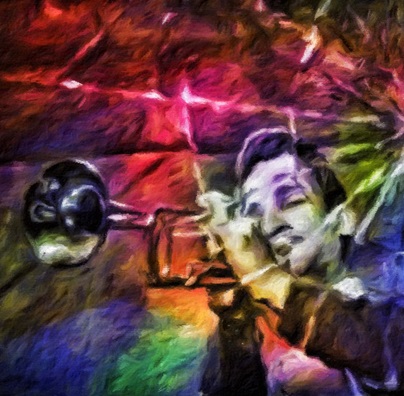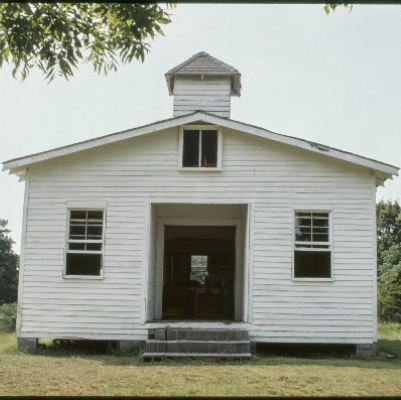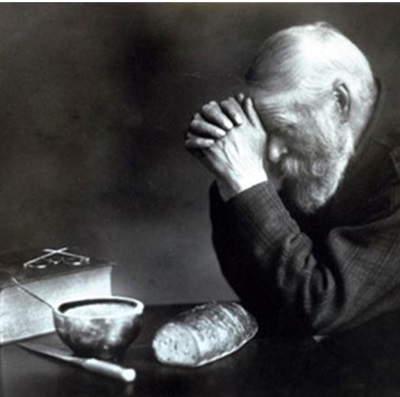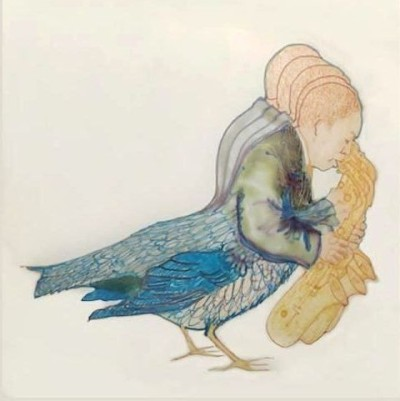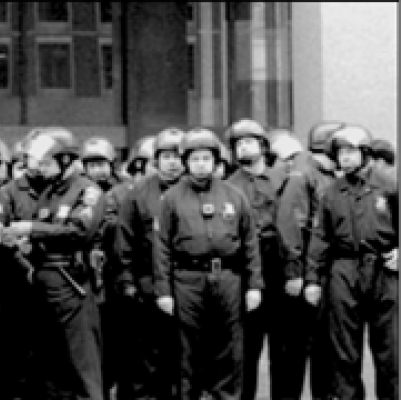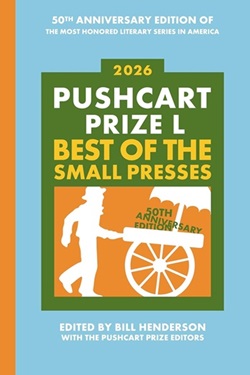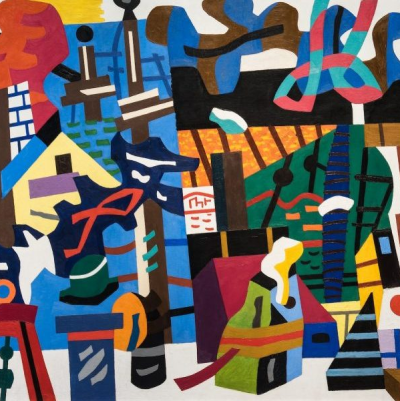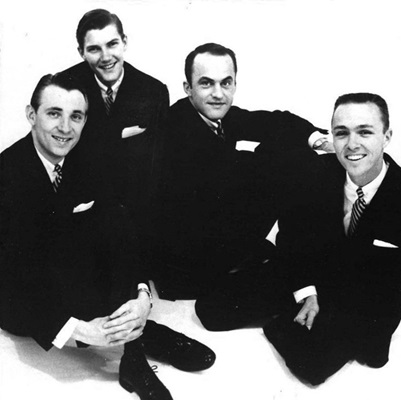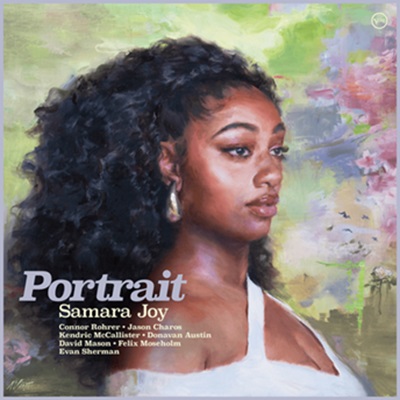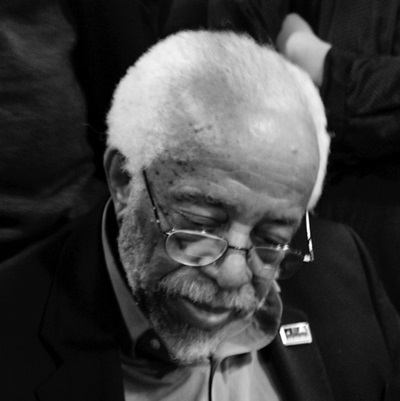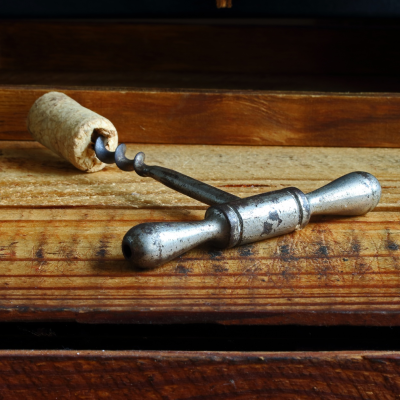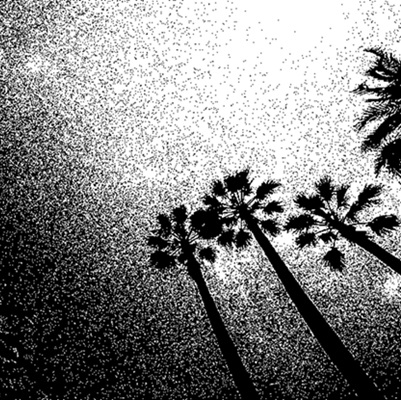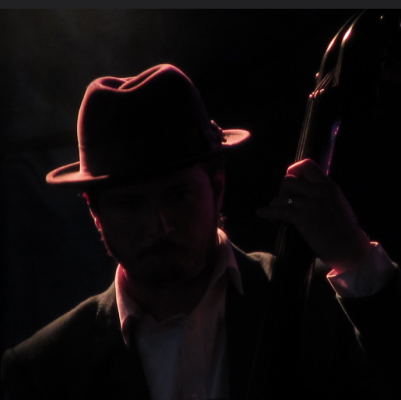Great Encounters
Book excerpts that chronicle famous encounters among twentieth-century cultural icons
______________
The story of the first commercial recording session of the Quintette du Hot Club de France, December 27, 1934
photo Stephane Grappelli collection
Quintette du Hot Club de France, 1938
Stephane Grappelli, Eugene “Ninnie” Vees, Django Reinhardt, Joseph “Nin-Nin” Reinhardt, Roger Grasset
______________
Excerpted from
Django: The Life and Music of a Gypsy Legend
by
Michael Dregni
__________________
Early on the foggy morning of December 27, 1934, Stephane, Chaput, and Vola climbed into Volas small car along with their violin, guitar, and string bass and made their way to the ensembles first commercial recording session. For the group to have gasoline for the journey, Delaunay had to lend Vola one hundred sous.
Ultraphone had scheduled the recording session for nine, running until midday; the studio was reserved for the labels stars in the afternoon. But before the Quintette could make its date, they had to find Django. Volat steered his car into la Zone until they came to a large Romany encampment. Here at last they found Djangos caravan. Stephand and the others roused Django and Nin-Nin, collected their guitars, and turned around to head back into Paris. Stephane was quickly learning the reality of working with Django: He had to take matters into his own hands. “For Django, it was always an act of pure martyrdom to get out of bed in the morning,” Stephane remembered. “Each time that we were going to record, I would go at seven in the morning to his bedside, where I truly had to drag him out of bed — along with many promises and, if necessary, threats — and I had to make him understand that without his presence the rendezvous would be canceled. Each time it was an incredible drama.”
Accompanying the Quintette to the session were Nourry, Delaunay, and Panassie, who had returned to Paris from his chateau for the publication of the book Le jazz hot and to hear Armstrong. Yet the Hot Club elite were not there simply to watch the recordings, but as auteur. In their conceit, they were on hand to tell the musicians how to make jazz. They no doubt viewed themselves in an exalted role as producers as well as the bands impresarios.
A retired organ factory in Montparnasse served as Ultraphones studio. The building was a monstrous yet unimpressive wooden shed; inside it looked like the cluttered backstage wings of an abandoned provincial music hall. The band unpacked and tuned up while two engineers dressed like doctors in white laboratory coats hovered around them. They oriented the single mic to best capture the ensemble, positioning Django and Stephane standing and close in to capture their solos, with the rhythm section seated and farther away to balance the sound. They recorded directly onto a wax-acetate matrix — quaintly called une galette after a Breton buckwheat crepe — which the engineers retrieved from a refrigerator when they were ready to record. As the needle tracked the music, an engineer swiped away the swarf from the virgin groove. “The recording sessions of this time appear prehistoric today,” Stephane recounted. “We played in a circle around only one mic. There were only eight matrixes, so there was thus no question of starting a song again as many times as we wanted. We had to play two Bordeaux of three minutes each for each 78-rpm record. Everything was incredibly simple .We prepared arrangements of the song heads right before playing them. It was incredible! When I think that these discs became so famous!”
The ensemble began with “Dinah,” the ubiquitous American jazz theme by Harry Askt. The song had been a hit across the ocean in the homeland of jazz for Louis Armstrong, then for Ethel Waters in 1926 and Bing Crosby with the Mills Brothers in 1931. Now, the Quintette recorded an instrumental version played solely on strings. Panassie remembered the session — also recounting his own part in the recording: “After several wax tests, they wanted to record the final version. The musicians played excellently but one of them made a mistake and it was necessary to start again. As Django and Grappelly were completely improvising, the new version was different. I was pleased with this take, as Grappelly appeared to me even more inspired. But as soon as he had played the last chord, Django bumped his guitar against a chair, which produced an ugly noise. The engineers came out of their booth and said it was necessary to start again because of this inopportune sound. But I feared the musicians had run out of imspiration and insisted they keep the last take, assuring the engineers this noise would hardly be noticed.” Panassie coerced Caldairou to release this take, choosing hot improvisation over recording perfection.
The engineers also had difficulties capturing the ensembles sound: Django and the others simply played too loud. Django was used to strumming and picking solo lines with all his strength in order to be heard above the din of noisy bals musette and jazz clubs. Over the years, his strong attack on this acoustic guitar became part of his style and he could hardly alter it now. After the band had waxed “Dinah,” Panassie remembered, “The Ultraphone director came to say they could not continue to record the orchestra at such high volume as it would make defective records. For the following songs, it was preferable to decrease the volume. Alas, this is what they did, and this is why the three other recorded sides from this day — Lady Be Good, Tiger Rag, and I Saw Stars– sound so much weaker than Dinah. The solos from Djangos guitar especially suffer from this lack of volume.” If Panassie had his way, he would also have controlled the recording equipment dials.
Panassie saw his auteur role as essential to save jazz from the record company philistines. While Django and the Quintette listened with pride to the playback of their first commercial side, one of the Ultraphone listened with pride to the playback of their first commercial side, one of the Ultraphone engineers drew Panassie aside. The engineer asked sotto voce why the musicians had “changed” the music from the version they played on the wax tests. Panassie laughed: “The bands improvisation had been such that this excellent man had not realized that the musicians had continued to play the same song.” The inspired improvisations that jazz fans understood as the heart and soul of the music confounded the Ultraphone engineers.
Behind Django and Stephanes improvisations, Nin-Nin and Chaput played rhythm in a style that became known as la pompe — the pump — for its fierce up-and-down beat. Their chording was based on the typical bal musette accompaniment, striking each beat with a percussive strum, any sustain choked off by dampening the strings immediately after the downward strum. Adapting this musette rhythm to foxtrots and jazz numbers, the pompeurs imitated stride piano accompaniment in the style of Fats Waller and James P. Johnson. Django and the other Gypsies hit the first and third beats with bass notes, accentuating the second and fourth with chords, a bass line, and a drums beat, creating a full bands sound with a minimum of instrumentation. The sound of la pompe was proscribed as light and dry, an ideal rhythmic accompaniment to a violin, accordion, or, as the music developed, a solo guitar. This basic pompe was then accented by syncopated half-note fills and rhythmic triplets like strummed versions of the Gypsy flamenco rasqueado, which flamencos played with a quick unfurling of their fingers across the strings. Among the Gypsy jazz players, this device became known as “shaking a bunch of keys.” To drive the harmonic chords, Django, Nin-Nin, and the other pompeurs added tremolo chords, echoing the sound of balalaikas. While the rhythmic pompe was based in the banjo playing of the bals, it flourished in the Quintette into a complex rhythmic style that was unique — swinging and hot and charged, but also at times limiting and cumbersome.
On the foundation of the pompe rhythm, Djangos skills of improvisation shone. His two fingers pranced through precise chromatic runs, flourishes of diminished arpeggios and minor-seventh scales, hit intriguing intervals, proudly unreeling his trademark riffs, turning the song inside out. His solo may have relied too much on tricks, but it was fresh and it was stylish. He no longer wanted to play Gypsy music, yet his jazz bore his Romany signature heard in the romance of the glissandos, the colorful hues of the chromaticism, the glitter of the diminished arpeggios with their odd intervals adding rhythmic punctuations, and above all in the virtuoso display of improvisation. He proved he had assimilated the music of Louis Armstrong, had acculturated himself in black jazz, and was now playing it his own way, returning it enriched. He had stepped far beyond the self-conscious, stilted jazz of Venuti and Lang. This was not the “Dinah” of Armstrong and Chicagoland jazz halls nor Josephine Bakers 1926 comic cabaret rendition. The Quintette recreated Armstrongs song on its 26 strings, making something new and original. And Djangos playing gave sound to the spirit of Jazz Age Paris. His lines of acoustic guitar notes were pure rapture, effervescent and evanescent, floating away with an unbearable lightness and transience of the moment, their fleeting beauty almost unbelievable. The genius of all his future music was in embryo in that one solo.
AFTER THE ULTRAPHONE RECORDING SESSION, the future looked brilliant to Django and the Quintette. They pocketed their fees from the session and left the studio in an ebullient mood, still inspired by their music. Walking through Montparnasse on that rainy Parisian morn, the could contain themselves no longer. They turned into the courtyard of a typical workers apartment block and unpacked their instruments. There, with the inner walls serving as a natural amphitheater, Django and the Quintette began to play one of their modernistique jazz tunes. Soon, apartment windows were unlatched as people stuck their heads out to see who was making music on this gray day. The sound of the guitars, violin, and bass reverberated through the courtyard, up seven stories to the highest apartments as children, housewives, and pensioners listened. And when the song came to an end, the impromptu audience rained down centimes on Django and the Quintette.
Django: The Life and Music of a Gypsy Legend
by
Michael Dregni
__________
Excerpted from The Django: The Life and Music of a Gypsy Legend, by Michael Dregni. Copyright © 2004 by Michael Dregni. Excerpted by permission of the author and Oxford University Press. All rights reserved. No part of this excerpt may be reproduced or reprinted without permission in writing from the publisher.





